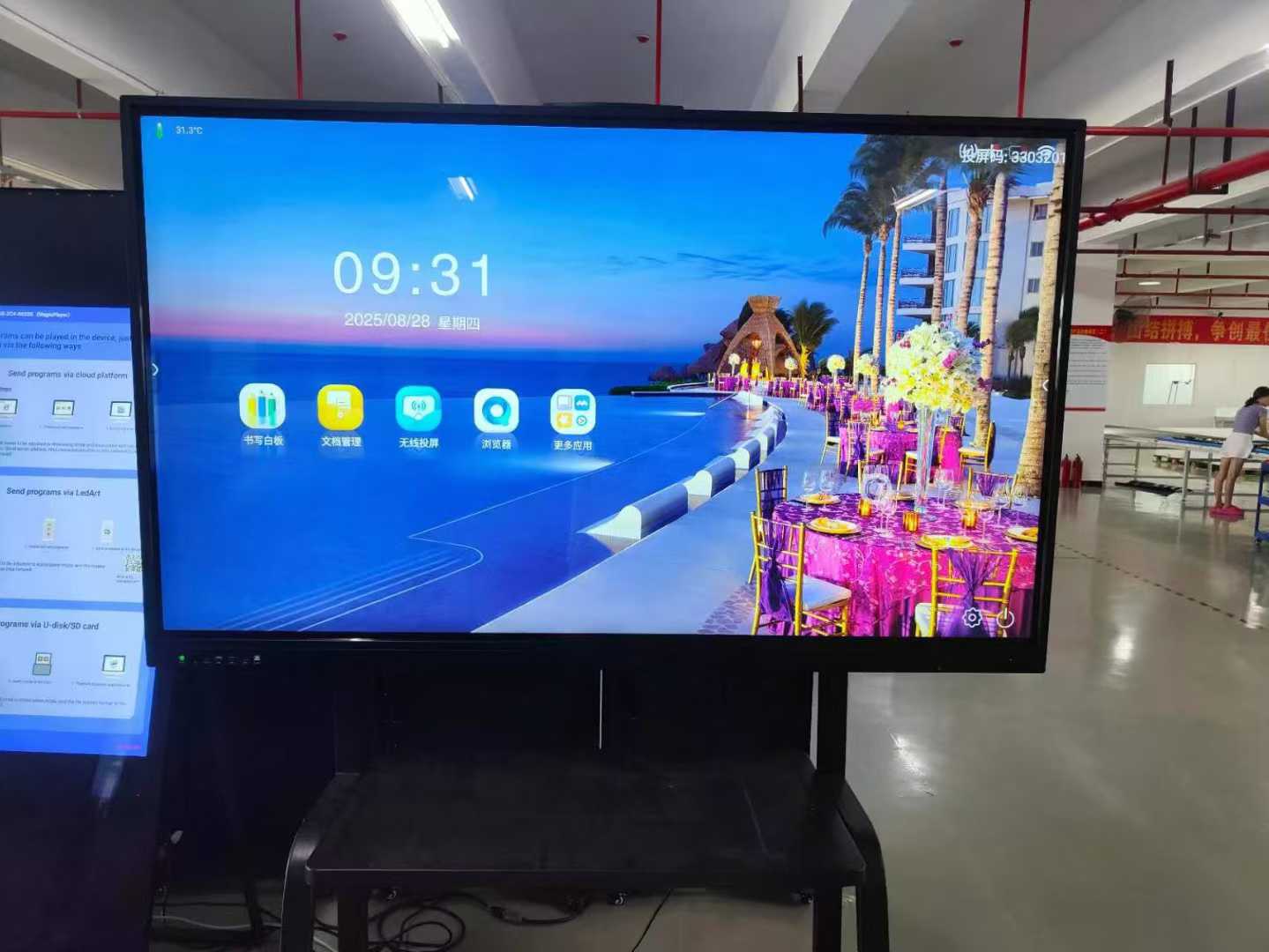The Advantages of Interactive whiteboards
Interactive whiteboards (IWBs) have revolutionized collaborative and educational environments with their versatile features. One key advantage is enhanced interactivity: unlike traditional whiteboards, they respond to touch, styluses, or even gestures, allowing users to write, draw, drag, and resize content in real time. This hands-on engagement boosts participation, especially in classrooms, where students can directly interact with lessons—solving math problems on digital graphs or annotating text passages—making learning more dynamic.
Conference tablets are built for collaboration. They combine large touchscreens with software for real-time annotation, screen sharing, and multi-user editing—essential for meetings. Integrations with video conferencing tools (Zoom, Teams) and cloud storage let teams collaborate seamlessly, in-person or remotely.
Another strength of the Interactive whiteboards lies in seamless digital integration. Interactive whiteboards connect to computers, projectors, and the internet, enabling instant access to multimedia resources: videos, images, or online tools can be embedded into presentations. Teachers, for example, can pull up a 3D model of the solar system during a science class, while professionals in meetings can showcase live data charts, enriching content beyond static text or diagrams.
Content retention and flexibility are also standout benefits. Notes, drawings, or entire sessions can be saved, shared, or revisited later. This is invaluable for students who miss classes (they can review saved lessons) or teams collaborating on projects (they can revisit brainstorming sessions to refine ideas). Unlike physical whiteboards that require erasing, IWBs offer unlimited "space"—users can add new pages or scroll through content without losing previous work.
Collaboration is amplified, too. Many Interactive whiteboards support multi-user interaction, letting multiple people write or edit simultaneously. In group settings, this fosters teamwork: students can work together on group assignments, and colleagues can contribute to a shared presentation in real time, whether in the same room or remotely (via screen sharing).
Accessibility features further enhance their appeal. Built-in tools like text-to-speech, color contrast adjustments, or magnification aid users with diverse needs, ensuring inclusive learning and communication environments.

